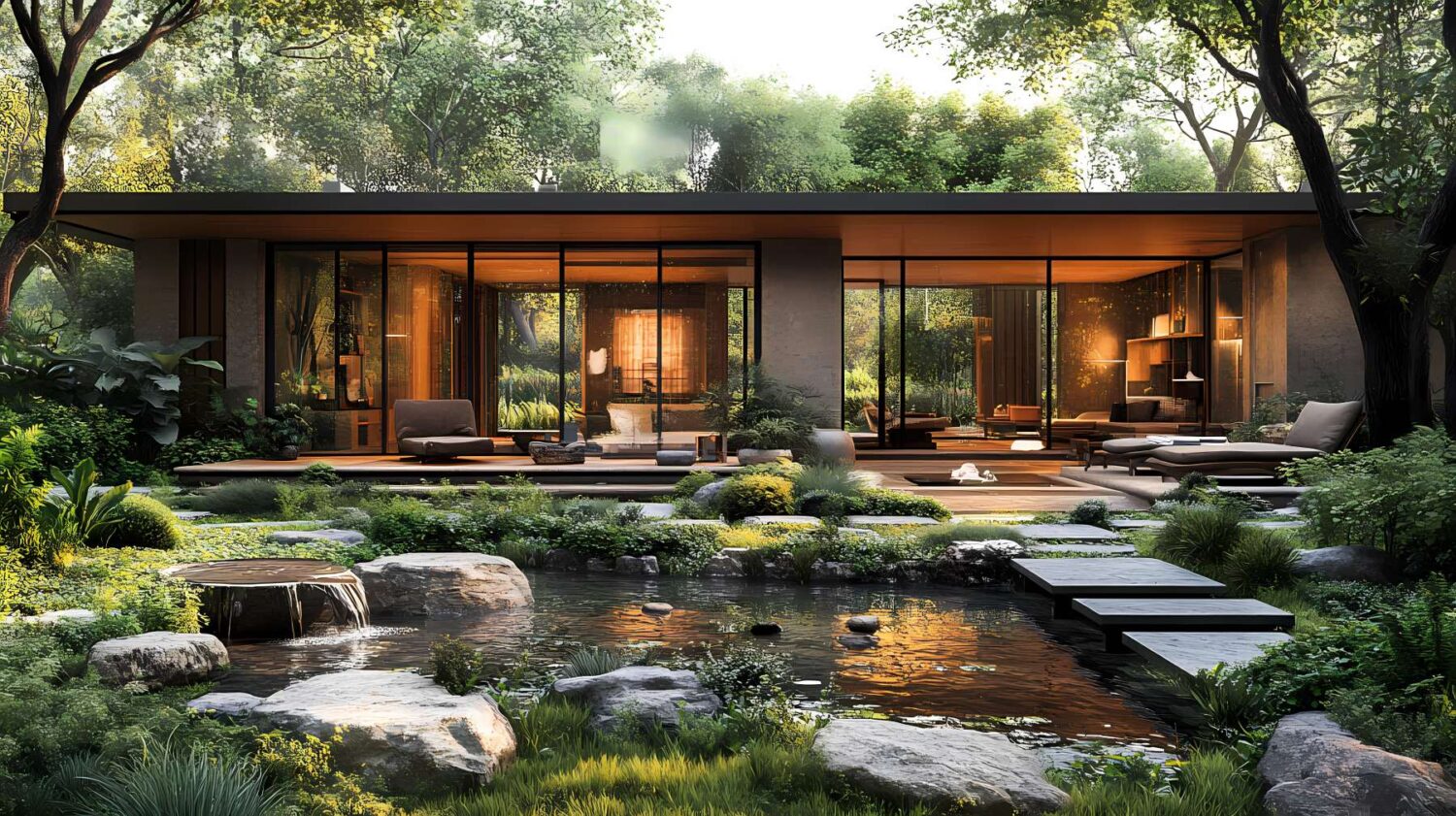A home isn’t just a place to live – it’s the foundation of your family’s well-being, and the way a house is designed can have a profound impact on health, harmony, and overall quality of life. From the moment you start planning your home, every choice – from its orientation to the floorplan plays a role in shaping the energy within. Feng Shui, the ancient Chinese practice of harmonising a space through the use of natural energy forces, offers an approach to design that goes beyond aesthetics – it ensures that your home not only looks beautiful but also cultivating balance, peace, and prosperity for those who live within it.
Feng Shui takes a holistic approach to home design, focusing on how energy moves through a space and how different elements interact. The placement of doors and windows influences the way energy enters and circulates, while the careful arrangement of furniture helps maintain a natural and unobstructed flow. By applying the principles of Feng Shui homeowners can create an environment that supports harmony, promotes both relaxation and vitality, enhances prosperity and creates positive energy in everyday life.
Some common mistakes made in Feng Shui are:
1. Confusing Good Interior Design with Good Feng Shui
Many people mistakenly believe that a stylish interior design or a well chosen colour scheme automatically means good Feng Shui, however Feng Shui is more about energy flow and balance that décor.
2. Placing the Kitchen, Staircase, or Toilet at the Centre of the Home
A floorplan with areas like the kitchen, staircase, or bathroom in the centre of the house can disrupt energy flow. The centre of the home should remain open and balanced to allow for good energy circulation.
3. Doors with Conflicting Angles for the View
Often doors are placed to capture a scenic view, but if these doors face different angles that conflict with the main entrance, it can create disharmony in the flow of energy through the home.
4. Misalignment of the Main Entrance and Internal Doors
If the main entrance or internal access doors are not optimally aligned, it can cause energy to move awkwardly through the home, leading to discomfort or instability. Proper alignment ensures smooth and harmonious energy flow.
5. Misunderstanding the Alignment of the Front and Back Doors
Some people assume that having the front door aligned with the back door is always bad Feng Shui. While it can be problematic in certain cases (causing energy to rush through the home too quickly), in some situations, this alignment can be beneficial depending on the doors’ location.
Consider Feng Shui at the Design Stage
If you’re planning to build a new home, incorporating Feng Shui principles from the outset can make a profound difference in how the space feels and functions when complete. A well-designed home, guided by expert Feng Shui insights, can promote positive energy flow, support your family’s well-being, and create an environment that nurtures success and happiness.
Consulting with a Feng Shui expert early in the design phase allows you to make informed decisions about layout, orientation, and spatial harmony before construction begins. Working with a professional like Melbourne based Edgar Lok Tin Yung or Perth based, Fran Maunton ensures that your home is created not just for aesthetics and function but for the wellness of your whole family.
Edgar Lok Tin Yung is one of Australia’s most highly regarded Feng Shui and Chinese Astrology consultants. With extensive training under traditional Feng Shui Masters, he carries the honour of being the 39th Generation Holder of the prestigious San Yuen Yuen Gua (SYYG) lineage. His focus is on providing personalised, practical guidance that meets the unique needs of each client.
To book a consultation with Edgar, go to loktinfengshui.com.au
P 0429 188 888
E lok@loktinfengshui.com.au
W loktinfengshui.com.au
Fran Maunton, a Perth-based Feng Shui consultant, has been helping clients create balanced and harmonious spaces since 2006. Her journey began in 2003 when she first discovered how our environment influences well-being, leading her to gain accreditation through the Singapore Feng Shui Centre and expand her expertise into Reiki, Theta Mastery, Healthy Homes, and essential oils. With a passion for energy flow and holistic living, Fran guides families and communities in clearing both physical and energetic clutter and fostering healthier, more abundant lives through conscious design and awareness.
To book a consultation with Fran go to fengshuifortunes.com.au
P 0409 290 504
E fran@fengshuifortunes.com.au
W fengshuifortunes.com.au









